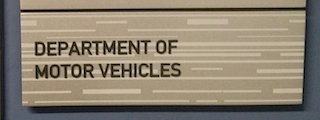The officer had our client submit to a preliminary alcohol screening (PAS) test. His breath alcohol content, considered a proxy for his blood alcohol content (BAC) and thus his impairment level, was measured at 0.098% and 0.093%. Our client was then arrested and taken to the East Los Angeles CHP station.
After being released in the morning, the client called our office and spoke with Greg Hill. It was the tenth day after his arrest, so Greg Hill’s assistant, Sandra Perez, immediately called the DMV to reserve a DMV hearing for the client and thereby stay the otherwise automatic 120-day suspension of his driving privileges.
At the DMV Hearing, our office prepared a 14-page written brief, addressing the three issues as set forth by California Vehicle Code § 13358(c)(2) that the DMV must consider for anyone age 21 and older who does submit to a breath or blood test:
- Did the arresting officer have reasonable cause to believe Respondent had been driving a motor vehicle in violation of Vehicle Code § 23152 or 23153?
- Was Respondent placed under lawful arrest? and
- Was Respondent operating a motor vehicle with a blood alcohol level of 0.08% or higher, by weight, in violation of Vehicle Code § 23152(b)?
For our client (referred to as the Respondent by the DMV), we argued that the CHP officer did not have sufficient reasonable cause to believe there was a violation of Vehicle Code § 23152 (DUI) based on observing, what was stated in his report. After all, it cannot be “weaving” or even an unsafe lane change unless the officer observed “pronounced” weaving.
In this case, the report did not quantify or describe how much our client’s car allegedly crossed into the lane to its right or left. Was it three feet or three inches? Over what distance had this taken place? Greg then argued that in
U.S. v. Colin, the U.S. Ninth Circuit Court of Appeals had ruled that a traffic stop was improper when a police officer observed a motorist driving his car so as to have his right tires on the fog line for 400 meters.
U.S. v. Colin (2002) 9th Cir. 314 F.3d 439 444-445.
We then argued that a driver does not violate the law, the officer simply cannot make a traffic stop.
Whren v. United States (1996) 517 U.S. 806. Even if such driving were deemed unusual, an officer may not make a legal traffic stop simply based upon unusual driving.
Taylor v. DMV (1995) 36 Cal.App.4th 812 (the officer’s subjective belief that a suspect’s driving is unusual is insufficient to support a traffic stop).
Therefore, under U.S. Supreme Court precedent,
Wong Sun v. United States (1963) 371 U.S. 471, the DMV could not consider any evidence obtained as a result of the traffic stop if it is an illegal stop. Such evidence is the “fruit of a poisonous tree” and subject to the exclusionary rule.
Mapp v. Ohio (1961) 367 U.S. 643.
This meant that the DMV could not consider our client’s PAS or breath test results, which were 0.085% BAC.
Apparently, the DMV agreed with our arguments and set aside the suspension of our client’s driver license, which our client was extremely happy with.
For more information about DMV issues, please click on the following articles:
